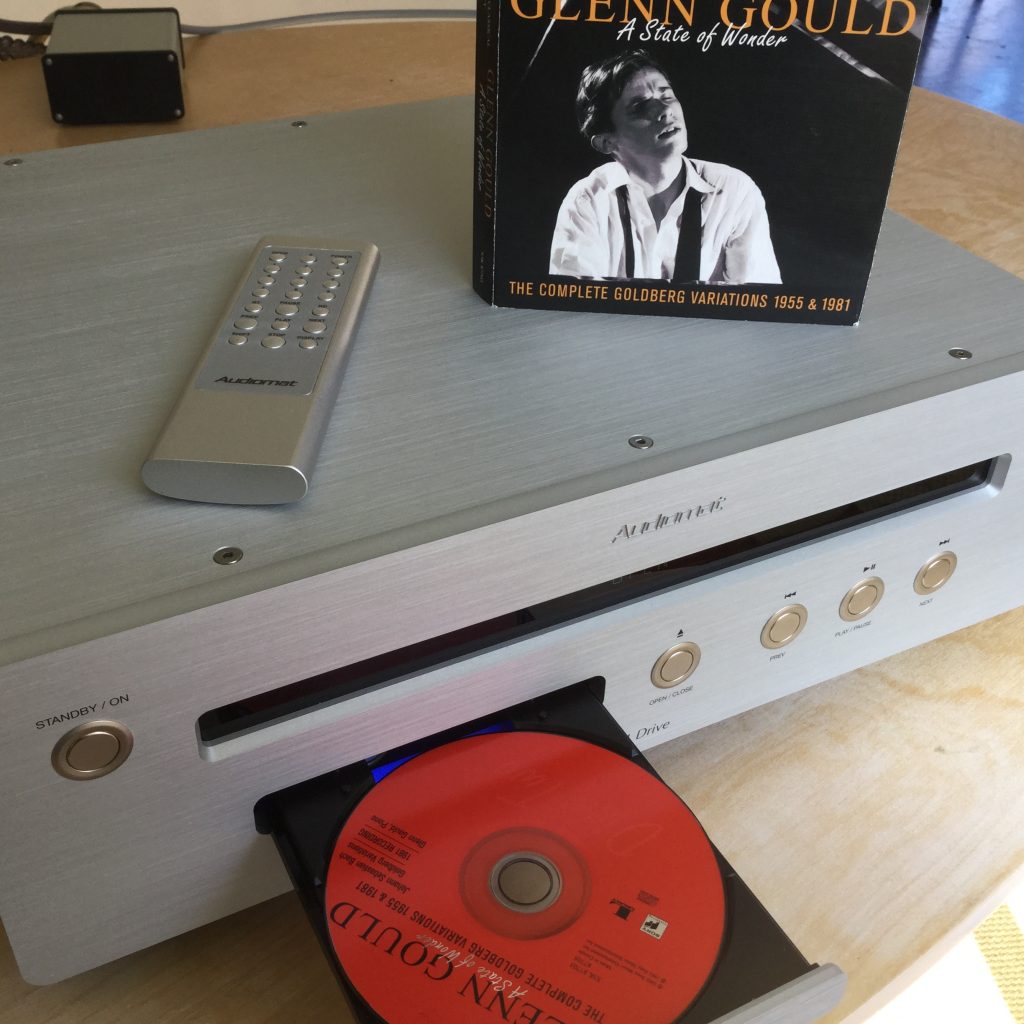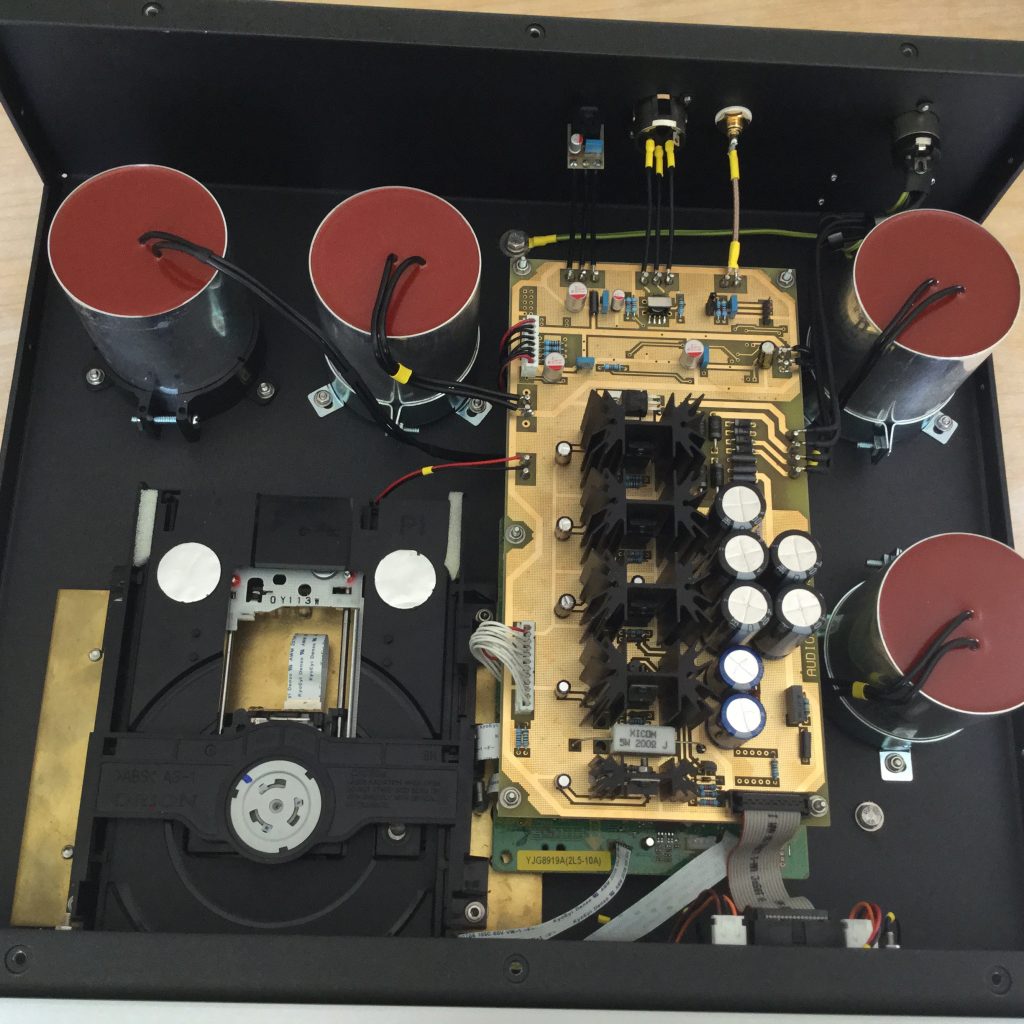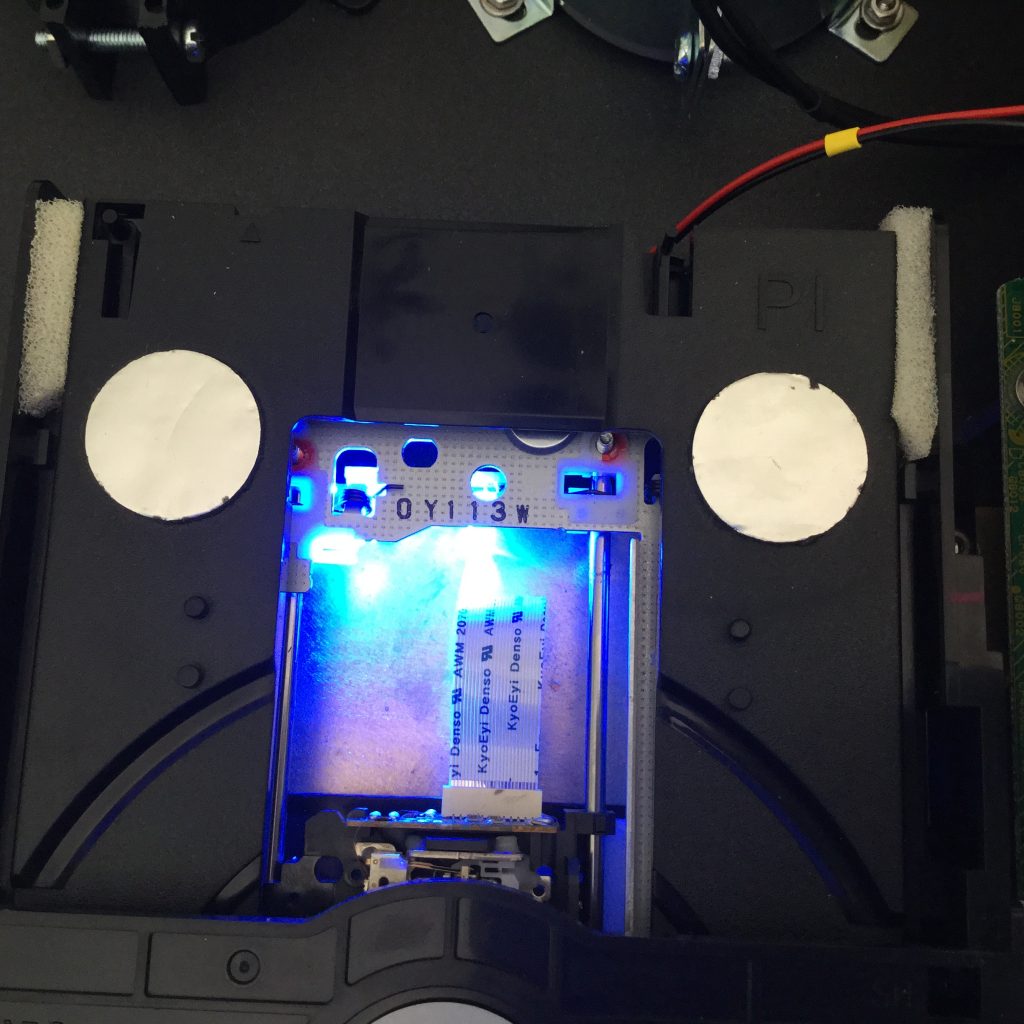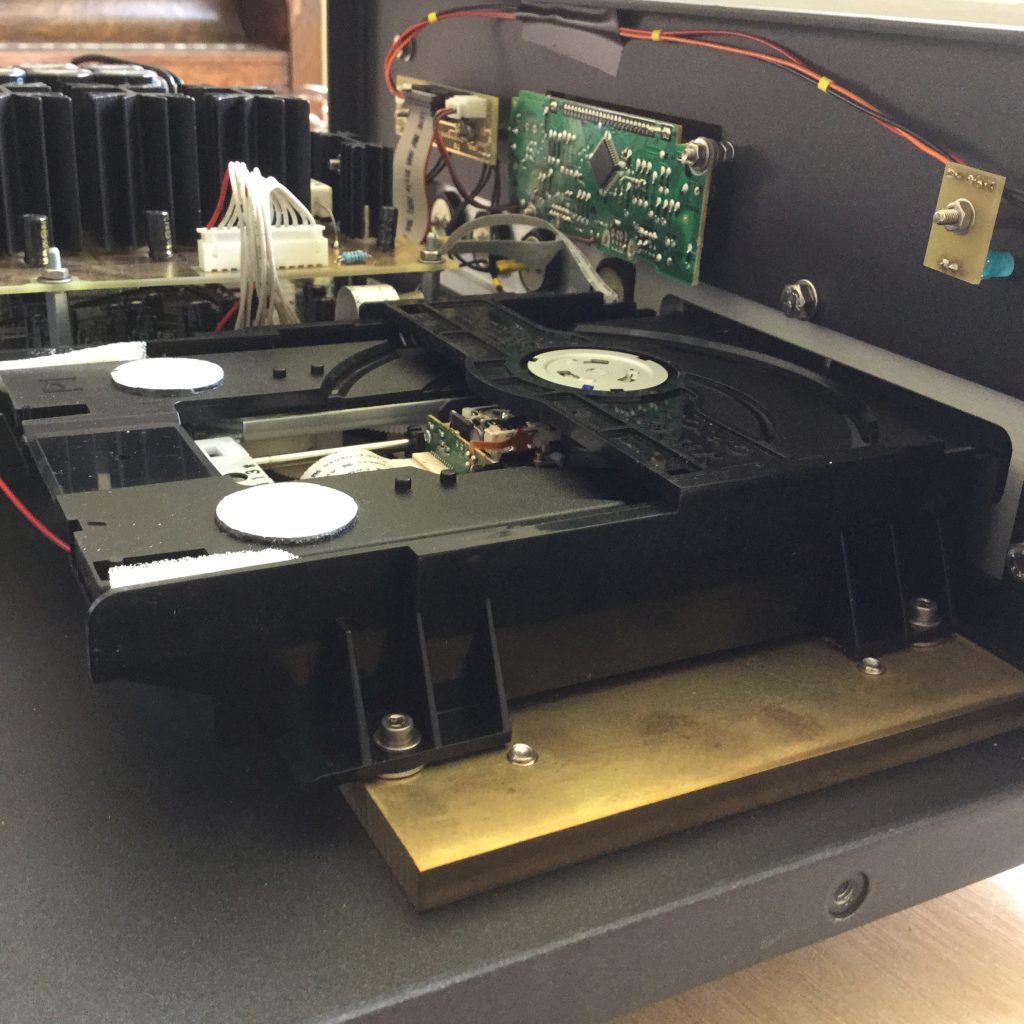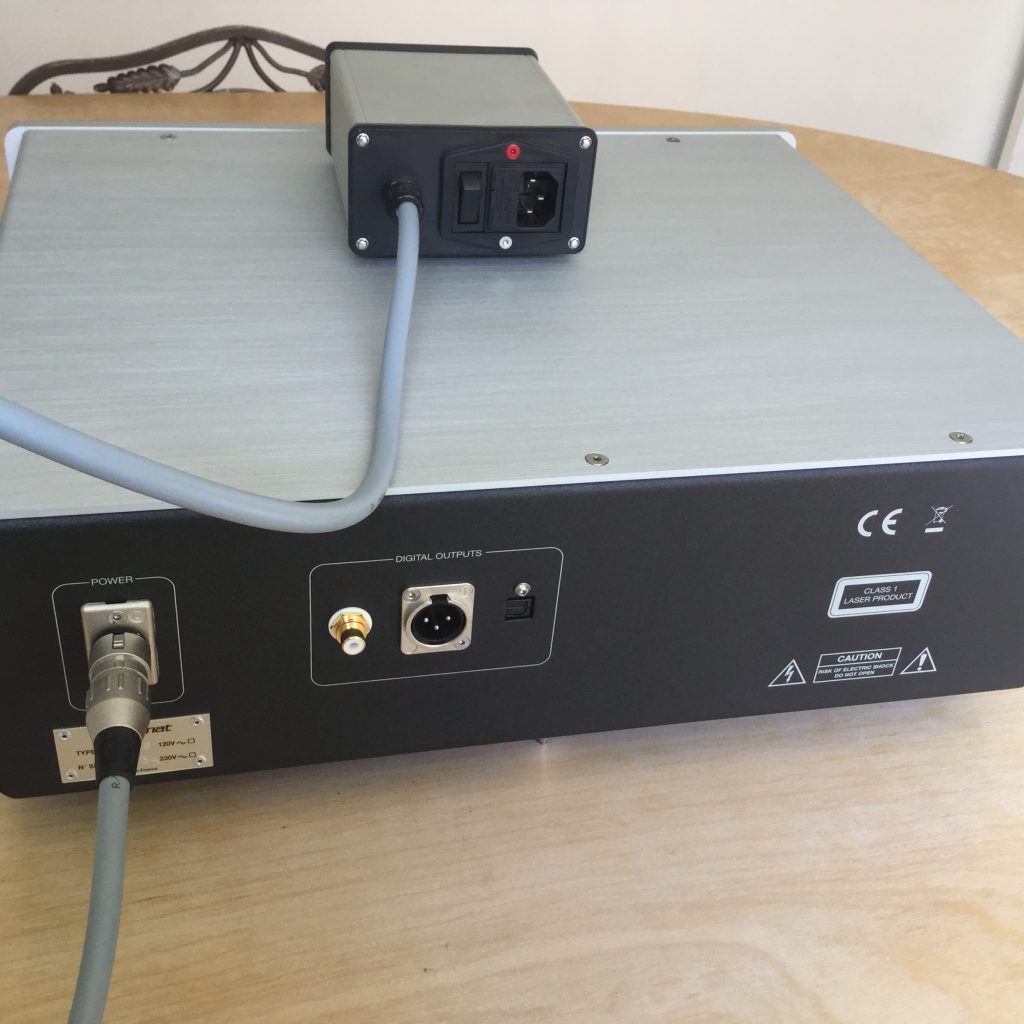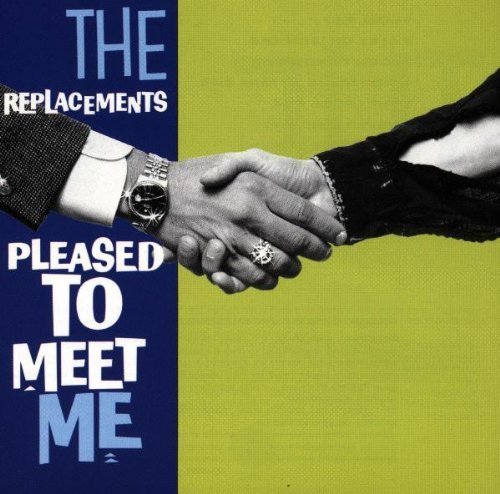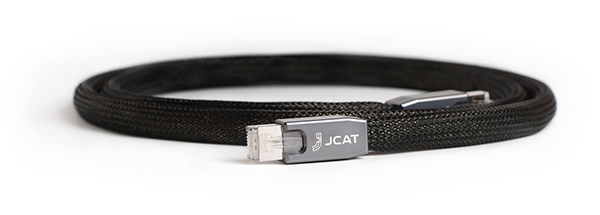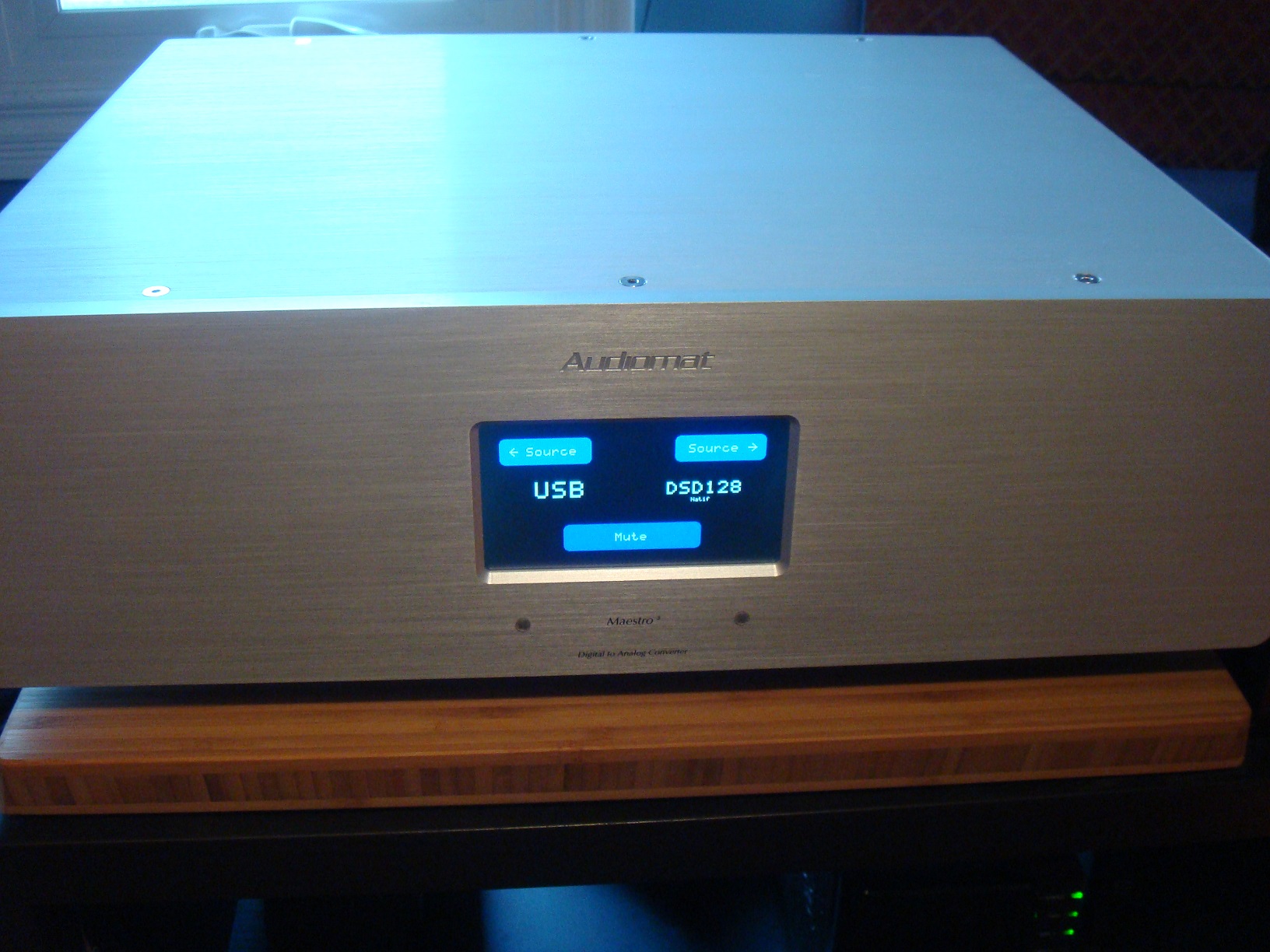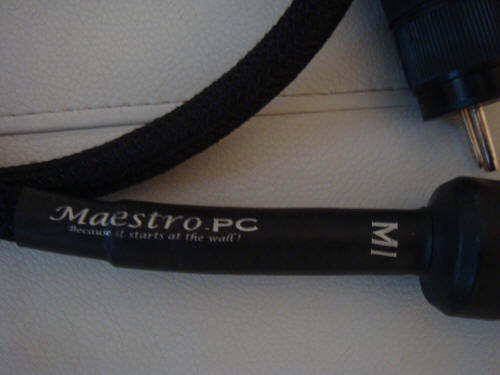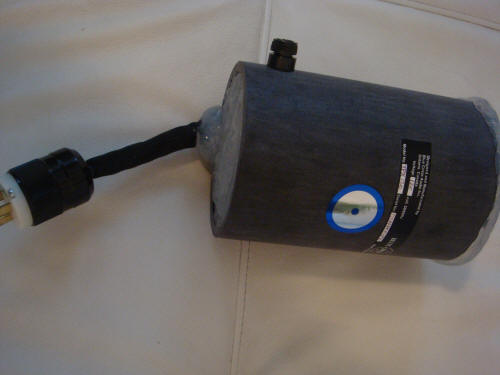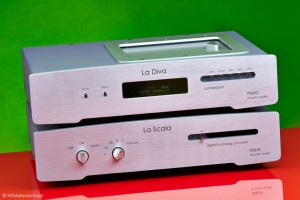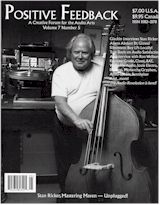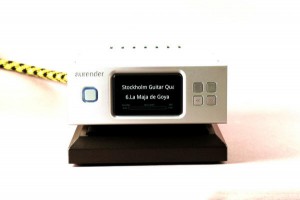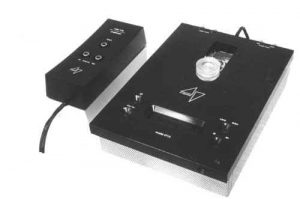You have not accidentally stumbled into the archives of PF. The subject of today's review is indeed a $9000 CD transport and the year is 2016 not 1996. Why would anyone buy such a thing now that CD is on the wane? Audiomat resides on a very short list of audio marquees that offer to my ears, an ideal reproduction of music, not just the sound but also the humanness of music and if they choose now to release their first ever CD transport, then I'm all ears as it were. Considering there are probably millions if not billions of CDs residing in collections, perhaps there still is need for a native playback solution, even one built to perfectionist standards. It was with that in mind that I settled in to have my preconceived notions of CD playback blown straight to Mars.
Based in France, Audiomat was started in 1986 by brothers Denis and Norbert Clarisse. Denis designs the equipment and Norbert manages the company. Their first product was a whopping 50kg 20 Watt OTL amp with 16 6AS7 triodes, two stages, no feedback and run in pure class A. Several integrated amps and DACs followed which received a good deal of positive press especially in Europe. Some folks might remember a review of the Arpege integrated amp in Art Dudley's much lamented Listener, which was as far as I know the first North American based review. Besides the D1 Transport Audiomat currently offers several integrated amps, phono stages, DACs, line preamp and power amp.
Audiomat is a tiny company that builds all its products by hand in small numbers and you will not see new and improved models every six months or an army of fully stocked dealers. Marketing is low-key and primarily relies on the old-school word of mouth method. Pursuing Audiomat requires a little bit of patience and effort especially outside of Europe. Audiomat is in many ways the epitome of a cottage industry.
Historically reticent on conveying specific technical information, as they prefer listeners use their ears rather than their eyes, I was surprised to find a good deal of information on their relatively new website.
The D1 uses a Pioneer DVD transport mechanism that sits on a 3kg brass plate and decoupled from the chassis with elastomeric materials. The transport can read CD, CD-R, CD-RW, DVD Audio and SACD; however, it cannot output a DSD signal. SACDs are instead down-sampled to 24-bit/88.2kHz. Outputs include RCA, Toslink and XLR.
The transport drawer is treated with damping materials to reduce effects of vibration. The disc clamp mechanism features a gold plated neodymium magnet to reduce rotation related noise. The drive mechanism is coupled to a buffer circuit (2-4 seconds) for optimal resolution and low jitter. The D1 also sports blue laser diodes that bathe the read side of the CD with indirect light that supposedly improves read accuracy via a phenomenon called Stochastic resonance.
According to Wikipedia,
"Stochastic resonance (SR) is a phenomenon where a signal that is normally too weak to be detected by a sensor, can be boosted by adding white noise to the signal, which contains a wide spectrum of frequencies. The frequencies in the white noise corresponding to the original signal's frequencies will resonate with each other, amplifying the original signal while not amplifying the rest of the white noise (thereby increasing the signal-to-noise ratio, which makes the original signal more prominent). Further, the added white noise can be enough to be detectable by the sensor, which can then filter it out to effectively detect the original, previously undetectable signal. This phenomenon of boosting undetectable signals by resonating with added white noise extends to many other systems, whether electromagnetic, physical or biological, and is an area of intense research."
The D1's anodized aluminum enclosure, internally coated with a matte black absorbent paint, measures 445mm x 150mm x 360mm and weighs in at 14kg. The external power supply, containing a 100VA transformer, measures 110mm x 60mm x 130mm, weighs 1.6kg and is connected to the D1 via a lengthy shielded detachable umbilical cord.
The front panel sports the usual display and control features one expects from CD players. I quite liked the understated blue display and while rather small was quite visible when seated ten-feet away. The included remote was not a cheap plastic throw-in but a substantial aluminum one with all the usual functions including switching between SACD and CD layers on hybrid discs.
Other than the Pioneer transport, everything else under the hood was typical Audiomat tweak-it-to-nth-degree fastidiousness; high precision oscillator with a dedicated power supply featuring copious amounts of capacitance, six independent regulators, and pop can size 880uF 250V polypropylene capacitors. More than many audio manufacturers, Audiomat pays particular attention to their power supplies a key determinant of good sound quality in my experience. Overall, the fit and finish of the D1 was understated elegance. I experienced no issues during the course of the review.
The DAC sits on three sharp nickel-plated brass cones so beware of where you place it. While the D1 ships with little cups to protect underlying surfaces, I sat mine on a nice Ikea bamboo cutting board. I placed the power enclosure on a separate shelf. I connected the D1 to my Audiomat Maestro 3 DAC with actinote's latest iteration of their Aria digital XLR cable. For comparison purposes, I used my trusty Asus i7 laptop/JMRC/JPlay/NAS/Light Harmonic LightSpeed/Sablon Panatela LAN combo, a CEC TL51 transport and a still surprisingly good Rotel RCD-971 player used here as a transport only. Speakers were either Duevel Venus or JM Reynaud Evolution 3 and occasionally included a pair REL Q108 subs. All cabling was actinote Aria, MIT Magum or Sablon Panatela/Corona Reserva although my preference was the actinote, which seemed the most synergistic match with Audiomat and either speaker brand. I'll have more to say about this latest version of actinote Aria in my upcoming piece on the Duevel Venus loudspeaker.
As for how music sounded via the D1, I will skip right to the end and simply state I have never heard CD sound as flesh and blood real or flow as effortlessly as with the D1. The best compliment I can give is that during my lengthy listening sessions with the D1 not once did I think of formats, digital, analog or hi-rez. My thoughts were strictly of a musical nature. The D1 deftly avoided the artificially squeaky clean yet harmonically threadbare sonics and temporal reticence that generally typifies CD playback and instead transformed it into something far more vivid and real.
I treasured the D1's perfect blend of ultra-high resolution that permitted a deep forensic viewing of recordings and its natural easy way with dynamics and forward motion.
Speaking of forensics, spinning up Bernstein's 1958 recording of Stravinsky's Rite of Spring showed excellent depiction of the recording's ambiance with palpable resonance around the musicians, the rich tone color of the instruments, especially the woodwind, were vibrant and distinct. I could feel the emotion and tension behind the notes. Each musical thread was steady, gripping, and suspenseful. Quite often, I found myself leaning forward in anticipation. But it was how well the D1 delineated the sheer momentum and rhythmic drive of this score that truly impressed. For me, CD playback has never quite fully captured the timing aspects of music. It has always sounded a little off in this respect. The glass ceiling of 44.1 kHz sampling has not helped either but curiously; it was not an issue with the D1. It was however, when I inserted my old Rotel deck and even my CEC TL51 seemed a tiny bit off.
Among my most prized recordings is Adam Fischer's set of Haydn's symphonies originally released on Nimbus but now available as a very affordable box from Brilliant. Arguably the most genial and sunny of composers, heck, even his so-called Sturm and Drang symphonies sound almost downright cheery. With the D1 it wasn't so much that I could hear deeper into the recording (absolutely sumptuous string tone) but more a sense that I was quietly standing at the back of the Haydnsaal at the Esterházy Palace eavesdropping on some brilliant, inspired musicianship. I was so much more aware of Haydn's genius and the care and passion that Fischer and his cohorts so wonderfully expressed during these sessions. I also found myself spending more time with Haydn's earlier symphonies than usual. Most folks prefer the latter more mature, developed works but the D1 allowed me to better appreciate the sense of the new, the youthful enthusiasm of the earlier symphonies. The D1 is so musically revealing that it compels the listener to dig out neglected recordings or explore new ones. And isn't that what we look for from a component?
Ben Webster's warm fat tone on Soulville was magnificent as was the scale and power of his tenor saxophone and the dancing dexterity and tunefulness of Oscar Peterson's piano, the transient snap of Stan Levey's kit, the bluesy tang of Herb Ellis' guitar, and the articulation and presence of Ray Brown's bass was equally impressive.
D1 also had stellar bass depth and articulation. I couldn't resist firing up Louis Fremaux's recording of Saint-Saens "Organ" Symphony. While pretty much any digital machine can deliver the low-end whoomf captured on this disc, but damn, the D1 clearly articulated those low notes.
Chris Mars' drum kit on The Replacements Pleased to Meet Me, one of my all-time favorite albums was wildly alive and visceral. The distinctive freight-train pulse and drive of the ‘Mats rhythm section was perfectly captured while Paul Westerberg's often plaintive winsome vocals especially on "Skyway" and "Can't Hardly Wait" set the hairs on the back of my neck on end. I have listened to this recording regularly, be it LP, CD or rip since its release date back in 1987. I can clearly recall grabbing the LP just as the clerk was stocking the new release rack at the much-lamented Records on Wheels in Toronto. For this well-worn track to evoke the same feeling as when I first heard it, I think says a lot about the D1's musicality.
The other side of this brilliant extraction of musical detail was that poor recordings, typically dynamically pulverized discs of recent vintage were impossible to listen for more than a few minutes, if that. Exhibit A was David Bowie's Blackstar: a fine final album from a fascinating creative musician ruined by wretched sound. There is no dynamic range, no graduation from soft to loud just all balls-to-the-wall compression.
Comparing the D1 to my old Rotel RCD-971, a fine transport, was downright embarrassing as was my CEC TL51 albeit to a lesser extent. CEC's belt-drive transports have always impressed me with their smoothness and temporal rightness but the D1 was in a class by itself. The Rotel seemed a tad off timing wise and notably brittle and tight in the top end of the spectrum particularly noticeable on strings or female vocals. The CEC handled timing and flow quite well and rarely sounded brittle or peaky but compared to the D1, it was not nowhere as alive or revealing.
Competition? CEC's $22,000 TL0 v3.0 is probably the closest to the D1 however it has been some time since I spent time with one and I don't recall having the same reaction as with the D1. For what it's worth, Mutine, also a CEC distributor finds the D1 superior at almost a third of the price.
Comparing my CD rips to the original discs via the D1 was a depressing exercise. The rips did not have the weight, density and the human touch of the physical disc. Sure, many rips sounded a tad smoother than via the D1 but clearly not as flesh and blood real. They frankly sounded somewhat thin and threadbare in direct comparison.
During the review process, I had the opportunity to compare the D1 and Maestro 3 Reference DAC combo against a NAS connected to the Maestro 3 Reference via its onboard Ethernet card. Ethernet streaming is supposedly the most technically sound way to stream file-based music as it removes the noisy computer and USB's kludgey interface from the signal chain, which is probably why we are seeing increasing numbers of DACs with Ethernet connections. I have to admit this sounded better than via my software-optimized laptop, expensive USB cables and dedicated playback programs. However, even with the Maestro Reference's SOTA Ethernet card, music still didn't have the meat and blood of the D1 nor did it convey the humanness of music to the same degree. Even high-resolution files suffered in this regard.
I compared a CD of Holly Cole's Temptation against the Analogue Productions DSD download and while I certainly heard more inflection in Cole's voice, greater detail on accompanying instruments, and a more overall dimensional, natural presentation, the 16-bit/44.1kHz disc was more visceral and immersive albeit a tad brittle in the upper band. Although I could live with both, I preferred the CD. It just sounded more real and compelling to my ears. I never would have thought that possible.
As the D1's transport mechanism can read SACDs I tried the small number of hybrid discs I still own and via the remote could switch from CD layer to SACD layer and compare the results. Unfortunately, the D1 cannot output a DSD stream but instead down-samples to 24-bit/88.2 kHz. Still, I could easily hear the difference between the two layers with the SACD layer generally sounded a tad more open and detailed versus the CD layer. However, I understand Audiomat's choice of transport mechanism was based solely on overall sound quality and musicality rather than format compatibility. Unless you are married to SACD, the D1's inability to stream a DSD signal will not be a deal breaker.
What to conclude from this? For starters, I think the demise of CD is greatly exaggerated since there's probably billions of CDs in homes and in circulation. Not unlike the LP some folks will want a means to play them. Plus not everyone is keen on ripping his or her CD library. Believe me, it's a royal pain in the ass. Then there's the silent minority (or is it majority) who have no use for the complexity of file based playback. Folks talk about how great this or that library management/playback software package may be but they are all far from true Plug and Play. You want Plug and Play? Buy a CD player. Can't get more PnP that that.
On the other hand, most of the new music I am interested in, especially classical, is either darn near impossible to obtain on CD or overpriced or both. Sites such as Qobuz, Presto Classical, eclassical and ProStudioMasters have replaced the now gone record shops I used to haunt. And with online 16-bit/44.1kHz streaming services such as Tidal and Qobuz my musical world has exploded. Unfamiliar recordings that I would hesitate in spending $20-$30 on are now accessible at no risk. Completely new worlds of music have opened up to me because of streaming. As a musical junkie on a budget, this is hugely important to me. While the sound quality may not yet be up the level of CDs played via a D1, it is in my opinion vastly superior to the majority of players and transports.
The D1 always sounded gloriously alive in way I had not thought possible with what most consider a technically limited if not already dead format. Furthermore, the D1/Maestro 3 combo demanded total listener commitment. It was impossible to focus on anything else.
Perhaps the rumours of CD's demise are indeed greatly exaggerated. Quite often CDs sounded more real to me with the D1 than with same recordings in their high-resolution file format played back on my PC setup. That really flipped my noodle. Perhaps heresy to some but in my experience, specs, DAC chips, and technical arguments are all wonderful and interesting but they will not tell you how well something will play music. And the D1 plays music terrifically well indeed.
Spending 9000 bones for a CD transport may seem questionable in this age of increasing dématérialisation of recorded music but for those who wish to extract maximum enjoyment from the venerable CD, I can think of no better solution than the Audiomat D1. If current discretionary budget permitted, I'd buy a D1 in a heartbeat for my remaining 300 CDs and ruthlessly ransack the few remaining second hand CD shops in nearby Toronto. Mate the D1 with the Ethernet version of Audiomat's Maestro 3 DAC and you can reap the benefits of both physical media and file-based playback. You won't believe how much unheard information is buried in your CD collection. Strongly recommended for those who can afford it.
Audiomat D1 Transport
Price: Approximately CDN$9000 depending on current exchange rates
Distributor (North, Central, and South America)
Mutine




